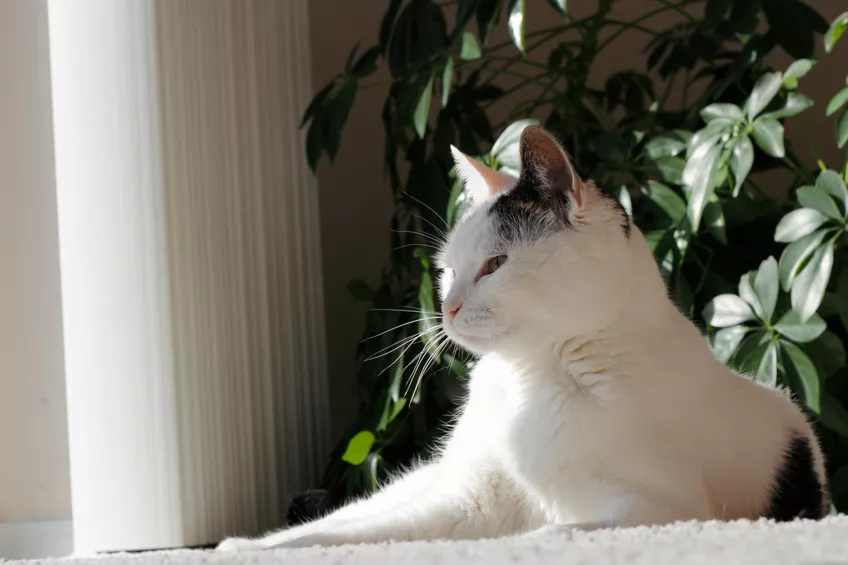- Mildly toxic to cats
- Life-threatening danger - probably not
- Typical symptoms of poisoning and first aid
- Safety precautions for a carefree coexistence
Cat owners know the subject: numerous plants in the home are poisonous to cats. It is best to find out exactly before you buy whether the houseplant in question can be dangerous to the cats. What about the schefflera? Is it a poisonous houseplant?
 The schefflera is mildly poisonous to cats
The schefflera is mildly poisonous to cats
Mildly toxic to cats
The schefflera is mildly toxic to toxic to cats. It's the oxalate crystals it contains that can bother cats. They challenge the work of the kidneys and can damage them and the bladder. Aralia are also poisonous to humans.
Life-threatening danger - probably not
The radiant aralie does not pose a life-threatening danger. It is extremely unlikely that a cat would fatally poison itself from this houseplant. The Schefflera only becomes dangerous if larger amounts are ingested. However, cats usually do not consume such large amounts. Therefore: Don't panic! It is much more likely that kidney stones could occur after consumption.
Typical symptoms of poisoning and first aid
If one or more of the following symptoms appear after eating radish ara, you should consult a veterinarian and give your cat water as soon as possible:
- diarrhea
- Vomit
- saliva
- Tremble
- balance disorders
- stagger
- loss of appetite
Safety precautions for a carefree coexistence
Do you keep the schefflera as a bonsai? Then you should not put them on the landing, on the floor of the terrace or anywhere else where cats have free access. Traffic lights, cupboards and inaccessible shelves are more suitable as locations.
tips
If your cat is not starving, it will hardly think of satisfying its hunger by eating radish ara.